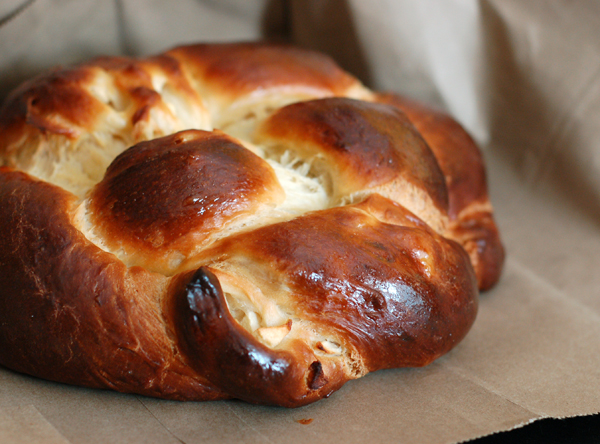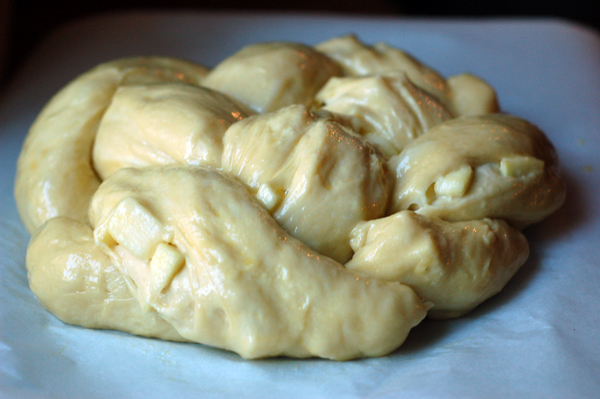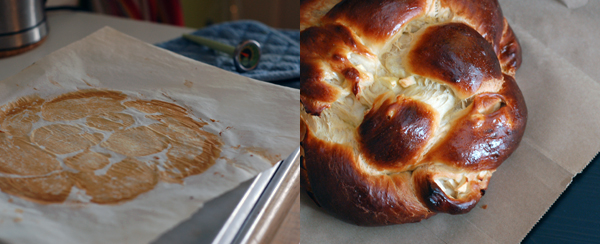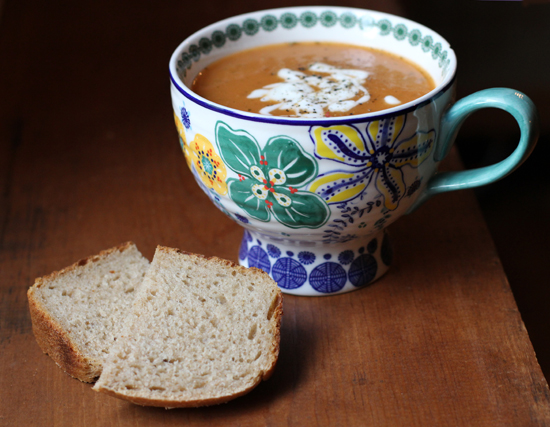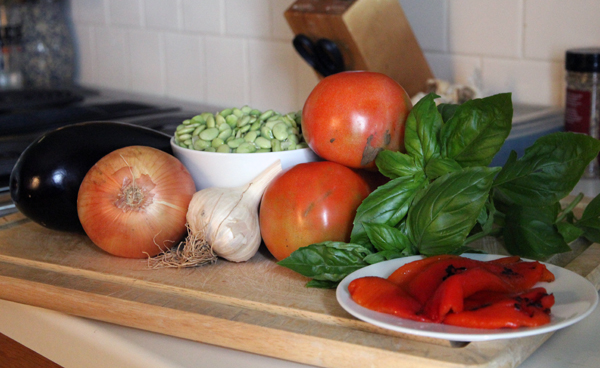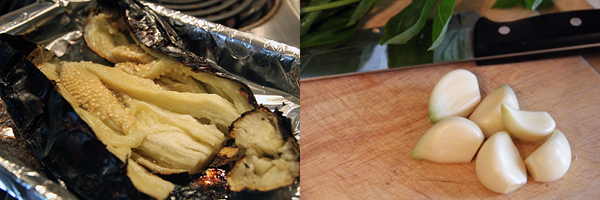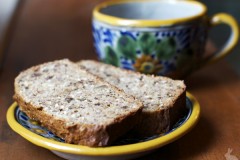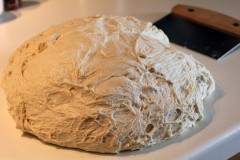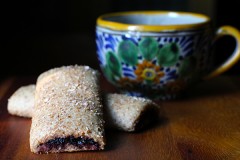One of, um, okay, probably the only benefit to my oven being temperamental lately is that when things are baking I now must stand sentry by its side throughout the cook time just in case it should decide to start turning itself off again. From this location, my typing is especially inspired, what with all the lovely baking smells wafting my way.
This effect was particularly potent during the baking of an Apple and Honey Challah the other morning. I had spotted the recipe on Smitten Kitchen and wanted to try it out immediately, but who wants to spend hours prepping bread dough only to be thwarted by an uncooperative appliance? Feeling braver after my pot pie success, I set out the ingredients and got to mixing. Despite the complex-looking braiding, the entire process was surprisingly simple.
Apple and Honey Challah
Pretty much as seen on Smitten Kitchen
2/3 cup warm water
2 t instant yeast
1/3 cup honey
1/3 cup vegetable oil
2 large eggs plus 1 large yolk
1 1/2 teaspoons salt
4 1/4 cups or 578 grams bread flour (Weighing flour is by the far the best, no-stress way to go when it comes to accuracy and neatness in flour measuring. If you bake often, consider investing. I have never looked back.)
2 medium baking apples, peeled, cored and in 1/2-inch chunks
Sprinkle of lemon juice, to keep them from browning
1 large additional egg, beaten, for bread wash
In a large bowl or the bowl of a stand mixer, whisk yeast and water. Add the oil, honey, and eggs, and thoroughly combine. The add the flour and salt, and stir till dough pulls together. In the mixer or by hand, knead until smooth and developed, about 6 minutes. Place the dough in an oiled bowl, cover, and allow to rise until almost doubled in sized.
(The original recipe used active yeast and suggested this would take an hour. My kitchen was chilly and my yeast was instant, so I left mine a little longer and in the end I wished I’d allowed the first rise to run even longer, but I got impatient.)
Let dough fall out of the bowl onto a clean counter and spread out into a wide disc, similar to a thick pizza crust, spread 2/3 of the apple chunks on the bottom half and fold the dough over, pressing it down and sealing in the fruit. Place the remaining fruit on to of half the dough again, and fold it over, pressing it down, sealing and tucking it into a boule shape. Invert and place the now-empty bowl over top of the dough and allow it to rest for 30 minutes.
There are many ways to braid a challah, and I really enjoyed the Smitten Kitchen’s braiding suggestions. You can get detailed photos and step-by-step instructions over her way. Basically, you cut the dough into quarters like a pie (a bench scraper works well for this, slicing cleanly through the dough), seal in the apple chunks, and stretch each into a foot-long log. If pieces of apple try and escape during this step, don’t panic. Just poke them back into the dough. I honestly expected this to be of comedy of errors, but there didn’t end up being a great deal of runaway fruit to deal with. Weaving the four strips over and under one another in front of you in the shape of a # sign, you then lift each “under” leg over top of the leg to its immediate right, doing this a total of 4 times as you move around the bread. Then you take the leg you didn’t braid yet and move it to the left. For me, this was all the braiding that was needed, so all that remained was to tuck the ends securely underneath the loaf. Move the bread to a sheet of parchment, and brush it with the egg wash. I slipped mine onto the back of a baking sheet for ease of transfer and covered it with greased plastic wrap. Let it rise again for an hour.
Preheat the over to 375˚F. When the final rise is complete and the oven is hot, remove the plastic, brush again with the egg wash, and bake for 45 minutes (tenting with foil if bread darkens quickly–mine always seems to.) When done, the inside of the bread should register at least 190˚F. My loaf ended up needing additional time, the middle still undercooked due to the fruit, so best to check.

